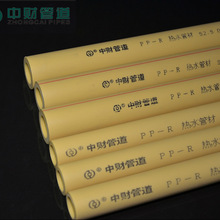Artificial Intelligence Full Course 2024 _ AI Tutorial For Beginners _ AI Full Course_ Intellipaat - Ep57
(Editor: web3)
 Learn Blockchain, Solidity, and Full Stack Web3 Development with JavaScript – 32-Hour Course - Ep130
Learn Blockchain, Solidity, and Full Stack Web3 Development with JavaScript – 32-Hour Course - Ep130 Solana Developer Bootcamp 2024 - Learn Blockchain and Full Stack Web3 Development - Projects 1-9 - Ep46
Solana Developer Bootcamp 2024 - Learn Blockchain and Full Stack Web3 Development - Projects 1-9 - Ep46 Learn Blockchain, Solidity, and Full Stack Web3 Development with JavaScript – 32-Hour Course - Ep204
Learn Blockchain, Solidity, and Full Stack Web3 Development with JavaScript – 32-Hour Course - Ep204 Learn Blockchain, Solidity, and Full Stack Web3 Development with JavaScript – 32-Hour Course - Ep110
Learn Blockchain, Solidity, and Full Stack Web3 Development with JavaScript – 32-Hour Course - Ep110 Full interview_ Donald Trump details his plans for Day 1 and beyond in the White House - Ep3
Full interview_ Donald Trump details his plans for Day 1 and beyond in the White House - Ep3
- Learn Blockchain, Solidity, and Full Stack Web3 Development with JavaScript – 32-Hour Course - Ep154
- Learn Blockchain, Solidity, and Full Stack Web3 Development with JavaScript – 32-Hour Course - Ep5
- Learn Blockchain, Solidity, and Full Stack Web3 Development with JavaScript – 32-Hour Course - Ep21
- Web3 Developer in 2024 Roadmap_ Solidity, Smart Contract, and Blockchain Development [Full Course] - Ep30
- Getting started with Web3 in 2025 _ Deep Dive Explainer - Ep7
- Learn Blockchain, Solidity, and Full Stack Web3 Development with JavaScript – 32-Hour Course - Ep27
- Learn Blockchain, Solidity, and Full Stack Web3 Development with JavaScript – 32-Hour Course - Ep149
- Learn Blockchain, Solidity, and Full Stack Web3 Development with JavaScript – 32-Hour Course - Ep208
-
Solidity, Blockchain, and Smart Contract Course – Beginner to Expert Python Tutorial - Ep103
 we're going to talkabout they all address this issue thenext one is called function selectorclashes
...[Details]
we're going to talkabout they all address this issue thenext one is called function selectorclashes
...[Details]
-
 need one of thoseaddresses give it a moment and it willcreate an address that starts with MNTsomethi
...[Details]
need one of thoseaddresses give it a moment and it willcreate an address that starts with MNTsomethi
...[Details]
-
 keycryptography where the whole purpose wasto keep your keys private so nobody canintercept your mes
...[Details]
keycryptography where the whole purpose wasto keep your keys private so nobody canintercept your mes
...[Details]
-
Learn Blockchain, Solidity, and Full Stack Web3 Development with JavaScript – 32-Hour Course - Ep72
 favorite number retrievereturns favorite number so we can callthat in ethers by doing constcurrent f
...[Details]
favorite number retrievereturns favorite number so we can callthat in ethers by doing constcurrent f
...[Details]
-
Solidity, Blockchain, and Smart Contract Course – Beginner to Expert Python Tutorial - Ep19
 start storing a favoritenumber associated with a certain peopleso inside of our struct we can havedi
...[Details]
start storing a favoritenumber associated with a certain peopleso inside of our struct we can havedi
...[Details]
-
Learn Blockchain, Solidity, and Full Stack Web3 Development with JavaScript – 32-Hour Course - Ep231
 down below we're going to callMint and list I'm going to copy pastewith that same script thing that
...[Details]
down below we're going to callMint and list I'm going to copy pastewith that same script thing that
...[Details]
-
Learn Blockchain, Solidity, and Full Stack Web3 Development with JavaScript – 32-Hour Course - Ep234
 that over make that look alittle nicer we'll give our link hereclass name equalsmr4 P6 we'll give bo
...[Details]
that over make that look alittle nicer we'll give our link hereclass name equalsmr4 P6 we'll give bo
...[Details]
-
![Web3 Developer in 2024 Roadmap_ Solidity, Smart Contract, and Blockchain Development [Full Course] - Ep37](https://cbu01.alicdn.com/img/ibank/2017/706/854/4496458607_1618462085.220x220xz.jpg) let's headback over to our code editor here and wewant to add that contract metadata toour profile s
...[Details]
let's headback over to our code editor here and wewant to add that contract metadata toour profile s
...[Details]
-
 wantto see the first few rows of the datalet's print the first few observationsin our data setright
...[Details]
wantto see the first few rows of the datalet's print the first few observationsin our data setright
...[Details]
-
![Web3 Developer in 2024 Roadmap_ Solidity, Smart Contract, and Blockchain Development [Full Course] - Ep61](https://cbu01.alicdn.com/img/ibank/2017/821/024/4037420128_1849040443.220x220xz.jpg) that there are stake tokens sowe'll check that the length is a greaterthan zero here if not we'll ju
...[Details]
that there are stake tokens sowe'll check that the length is a greaterthan zero here if not we'll ju
...[Details]
GenAI Essentials – Full Course for Beginners - Ep123

Learn Blockchain, Solidity, and Full Stack Web3 Development with JavaScript – 32-Hour Course - Ep61

- XRP Ripple LIVE Senate Brad Garlinghouse - FROM WALL STREET TO WEB3 - Martyn Lucas Investor - Ep24
- Learn Blockchain, Solidity, and Full Stack Web3 Development with JavaScript – 32-Hour Course - Ep211
- Web3 Developer in 2024 Roadmap_ Solidity, Smart Contract, and Blockchain Development [Full Course] - Ep31
- Learn Blockchain, Solidity, and Full Stack Web3 Development with JavaScript – 32-Hour Course - Ep210
- GenAI Essentials – Full Course for Beginners - Ep61
- Solana Developer Bootcamp 2024 - Learn Blockchain and Full Stack Web3 Development - Projects 1-9 - Ep56
- The Basics of Web3 - Ep7
